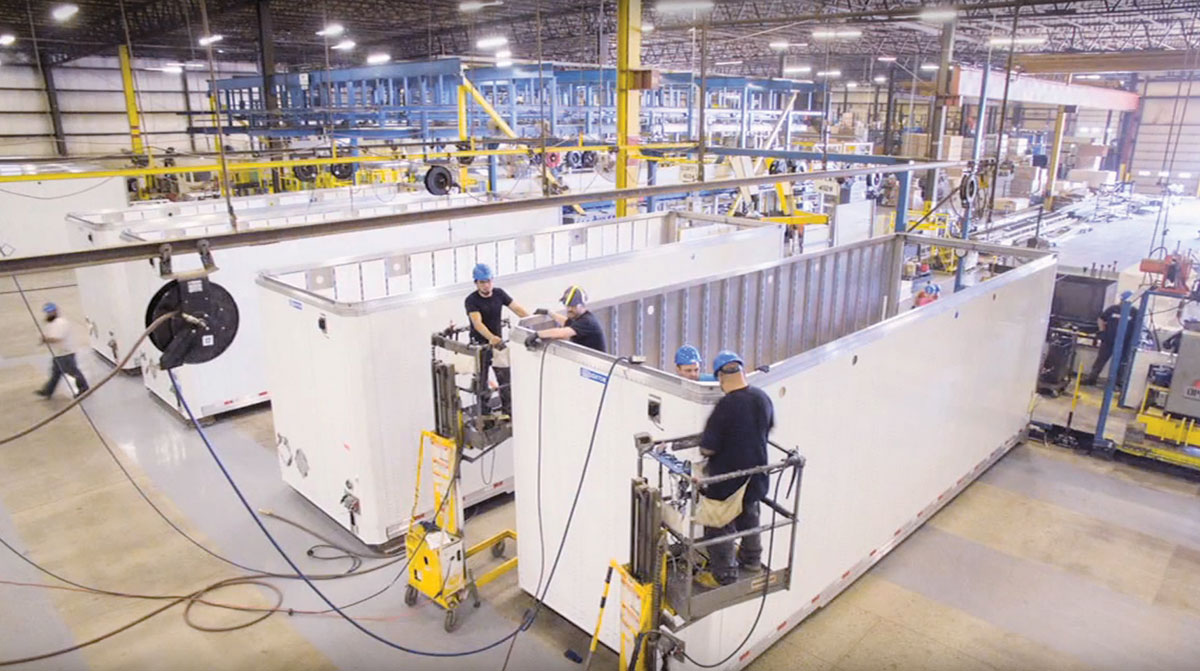Staff Reporter
Trailer Orders Continue Sequential Improvements in December

[Stay on top of transportation news: Get TTNews in your inbox.]
U.S. trailer orders continued to improve sequentially despite falling well below their year-ago numbers in December, according to ACT Research.
Preliminary data for the month showed orders decreased 57.6% year-over-year to 24,300 units from 57,300 but rose by 15.2% sequentially compared with the prior month’s preliminary total of 21,100 units. The past six months have seen steady improvements with the exception of a sequential decline for trailer orders in November.
“After a disappointing, although not unexpected, drop last month, December’s preliminary net orders aligned with less-than-stellar expectations,” said Jennifer McNealy, director of commercial vehicle market research and publications at ACT, “particularly amid a backdrop of weak profitability for truckers and anecdotal commentary from trailer manufacturers who have shared that orders are coming but at a slower pace than they have the last few years.”
McNealy added that the other indicators being watched closely include cancellations and the backlog-to-build ratio. She noted that cancellations oscillated above comfortable levels for most segments in December, while the backlog-to-build ratio has been weakening in aggregate for around five months. She noted some specialty segments have no available build slots until late this year, while others are in the three-month range.
[January State of the Industry: U.S. Trailers Preliminary Update] - Preliminary Net Trailer Orders in December Higher Sequentially but Lower Y/Y
Read the full blog here: https://t.co/cZsJDDD4hu pic.twitter.com/0rg2NTPsSH — ACT Research (@actresearch) January 15, 2024
“It’s still been, from our perspective, more of the same for most of last year,” said Brandon Lairsen, vice president of trailer leasing at Transport Enterprise Leasing. “There was a little flurry of activity there at the end of the year, but that’s pretty common.”

McNealy
Lairsen noted that the year-end boost in activity was driven by companies trying to get their equipment and capital expenditure needs in place before 2024, adding that it wasn’t abnormal or that it signaled the freight downturn is over.
“When COVID hit, we saw these record volumes of freight demand and capacity was already tight,” Lairsen said. “And so there was this massive expansion of capacity to cover the freight demands over the last few years. Last year, toward the end of, really, 2022, we started to see that taper off.
“So, what happened was we had this glut of equipment that had been put into the marketplace that was now not being utilized because there was no need for it.”
Lairsen believes that despite freight activity being down relative to the previous couple of years, it still is going strong. He pointed out, however, that with the excess equipment that stuck around when the market slowed it has become more difficult to sell things such as trailers. He doesn’t expect that to change until capacity starts to tighten.

Lairsen
“I think it’ll be a combination of companies that are exiting the market, they just can’t weather the storm, along with freight volumes continuing to rise steadily,” Lairsen said. “I think when we get to a certain point of utilization of the existing capacity, we’re still going to see the demand for new equipment really sag.”
Lairsen noted that the companies he works with mainly are trying to utilize their excess capacity before buying or leasing new equipment. The exception at the moment, he pointed out, is larger fleets that are trying to stay on their equipment replacement strategies.
“I think we continue to see pockets of varying activity,” said Jeremy Sanders, chief commercial officer at Stoughton Trailers. “The overall freight market continuing to be sluggish is definitely having an impact on the market in general.
“I guess I wasn’t overly surprised with the December results and the trend that kind of seems to be continuing as many customers continue to wait and see what’s happening in the overall market.”
Sanders believes how trailer orders have been trending is indicative of capital tightening more broadly. It also shows companies are being more cautious with their fiscal discipline given the current freight market dynamics.
Ben Gardiner, a cybersecurity expert at the National Motor Freight Traffic Association, shares practical, effective strategies to shield your business. He offers insights into operating systems and a comprehensive guide to cyber resilience. Tune in above or by going to RoadSigns.ttnews.com.
He foresees the possibility of interest rates disrupting things as well, depending on what they do in the year ahead.
“I think that there’s definitely a delayed action in some regards; let’s see what happens in the environment,” Sanders said. “Do we see freight increase? Do we see some of the restocking at retail occur? How does all that shake out, and then, what does that lead to in terms of equipment opportunities relative to capital? I think the capital tightening is a theme that crosses our industry at the moment.”





